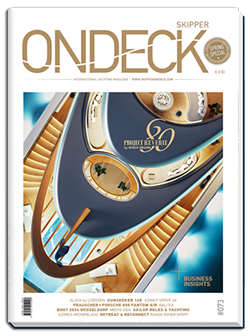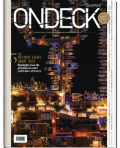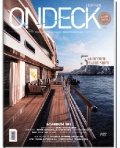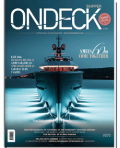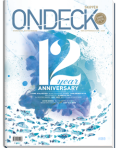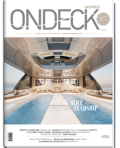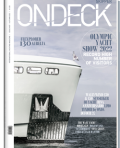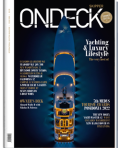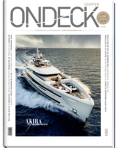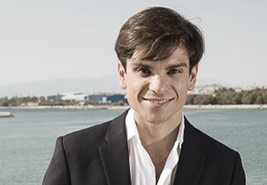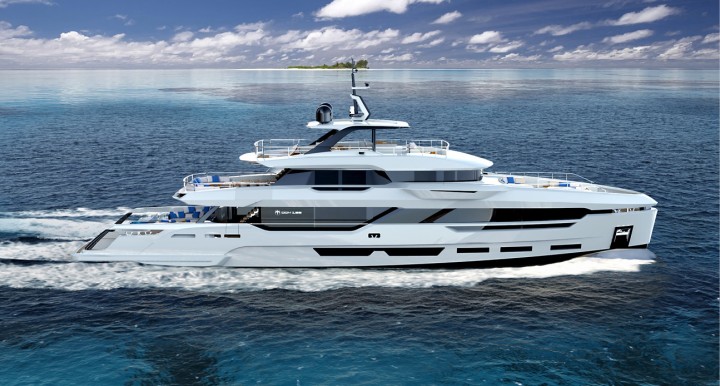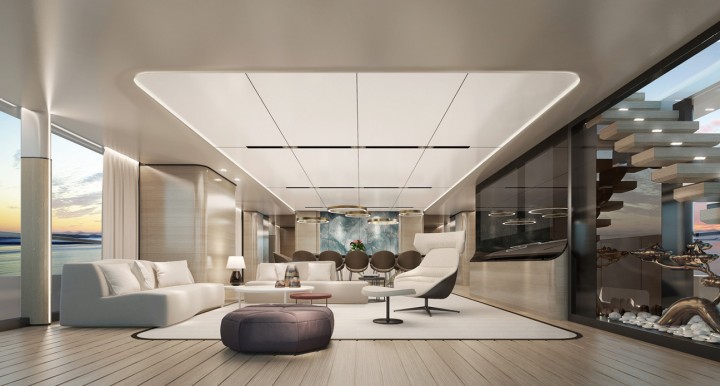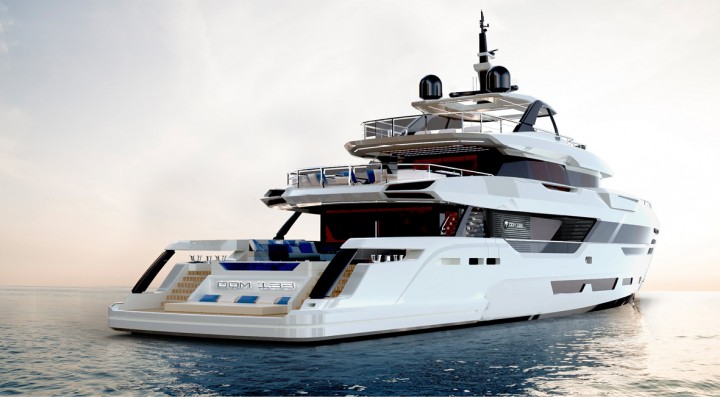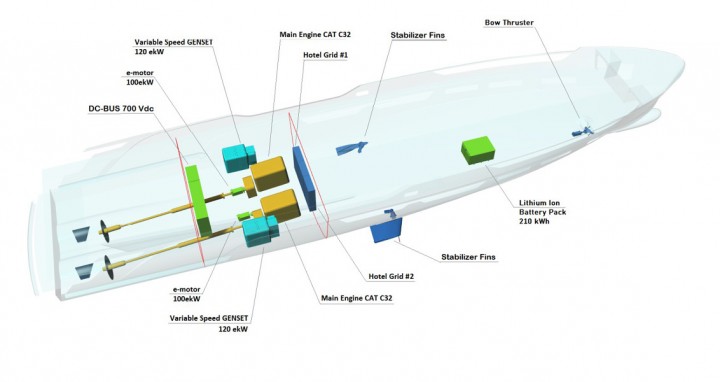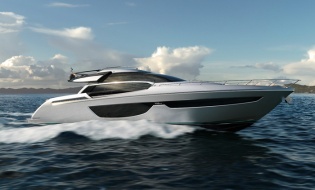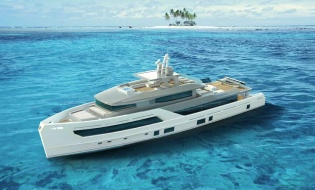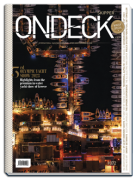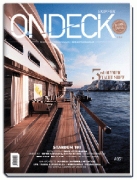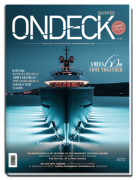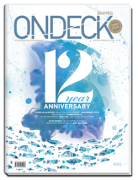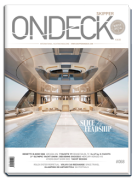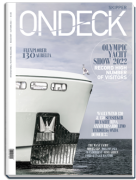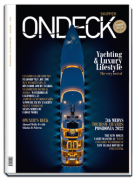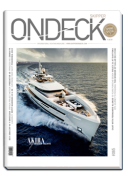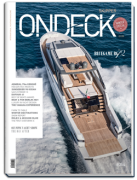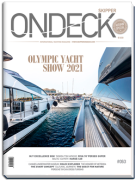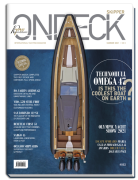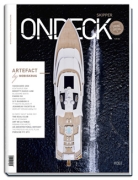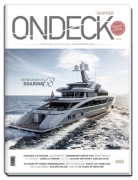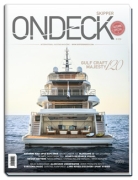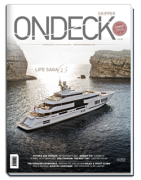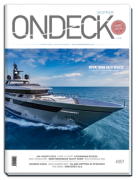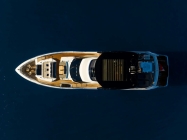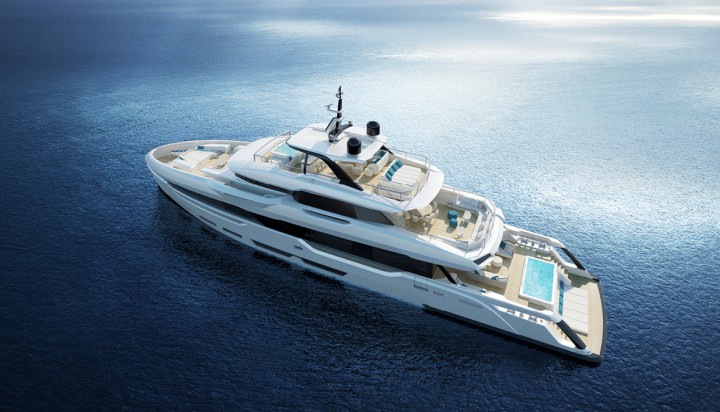
Responsible yachting, love for the environment and more fun. Award-winning designer Stefano Vafiadis expresses his thoughts and experience in designing green yachts.
Words by Stefano Inglese Vafiadis, STUDIO VAFIADIS
BAGLIETTO 3901 DOM133 “ePROP” HYBRID POWER YACHT
Sustainable yachting is really the hot topic at the moment. I still remember when the typical question of boat owners used to be “How many knots can your boat reach?”… So different from these days when all you get is: ”How many liters per hour does your boat consume?”
Is it just a trend? Something to chat about with friends or is it something more: real love for the planet? (plus fuel saving, which is not bad at all…)
What are the greatest improvements and innovations presented over the last years?
Sailing yachts have always been the best option as far as responsible yachting is concerned, as they can always be pushed somehow by the power of wind without the need for engines (theoretically). But the winds are finally changing for motor yacht lovers too. Today motorboat owners have many reasons not to feel too guilty about their new purchase, thanks to the adoption of new and eco-friendlier technologies.
The range of possibilities nowadays is huge: from ethical subcontractors who use natural and fair resources (like teak wood for our decks from protected and certified forests) to new systems of propulsion.
The future of motor yachting is full of hope. We can, in fact, save our planet and increase our range and efficiency.
Although hydrogen yachting has been long conceived (rumour has it that Bill Gates has bought one such model), it’s actually time we moved from carbon-oriented propulsion to the power of the future: electric propulsion. Even though a fully electric big motor yacht may still be out of reach considering the currently available technology, we still stand a chance thanks to one of the most realistic and reliable systems of energy saving available on the market: the “Hybrid” technology is already well known and tested, but let’s look into the advantages and disadvantages of this type of propulsion.
My experience with hybrid yachts is strongly related to the brave decision of one of the most experienced CEOs of the yachting industry, Diego Deprati, who always believed in this technology and started building yachts with hybrid propulsion starting with the design of “Vanadis”, a vessel developed in collaboration with Siemens. Launched in 2018 and hosting a Schottel drive system plus diesel-electric propulsion, she proved to be very fuel efficient and silent when cruising. Moreover, she was a very reliable system in days when many people, even big names in the industry, were underestimating this technology and saying that it was more marketing than real savings.
BAGLIETTO 3901 DOM133 “ePROP” HYBRID POWER YACHT
Following the good experience gained during the construction of the Vanadis Project one year ago, we decided that on my new project, the 133 BAGLIETTO DOM, which is currently under construction, we should have hybrid propulsion. The Dom is a very innovative boat, from the styling of the exterior to the aft accommodation, the beautiful open beach club floating on the water and, of course, her hybrid system propulsion.
Very similar to Vanadis,the system is based on a DC BUS developed by Siemens. Depending on the “mode” selected, this system organizes the flow of the energy produced by electricity and diesel engines to the different outputs: from hotel loads to stabilizer fins, even the propellers.
The great innovation of this system is its great flexibility and the focus on the needs of modern owners. For instance, captains can switch between different setups and, depending on the task, they can choose to cruise in electric mode or diesel-electric, reducing the savings but increasing the speed. Of course, you can always use the power of the 2 diesel engines at max speed and enjoy a fast cruise, and at the same time recharge the batteries and the generators, so there’s never any loss of energy.
This flexibility is made possible thanks to the 2 generators mounted onboard, capable of 90ekW gen-sets CatC4.4, as well as the innovative electrical Siemens e-motor, with variable speeds and frequency, which allows you to adapt the diesel speed and the load to the required power.
The DC BUS coordinates the different modes and is basically the brain of the whole system, aiming at giving maximum availability to the system even at reduced performances.
The electricity to charge the generators and the battery pack consisting of 5 Akasol modules -35 kWh each- is also generated by the electric e-motor mounted on each shaft line. While the engine is on and the shaft line rotating, they generate clean energy to be used in different ways, not only propulsion but also for comfort onboard.
Thanks to the shore power converter, there’s also the possibility of “plugging in” your boat when docked at the marina and recharging the batteries and generators.
The different propulsion modes make all the difference: you can go Diesel, and then the main propulsion is generated by a more traditional system, which uses the two Cat C32 engines, 2000 Hp each,and you can go cruising at up to 17 knots while consuming much more fuel, reaching a range of 4,000 nm at 10 knots.
The best option, of course, is the diesel/electric combo or even the fully electric option.
The fully electric mode can guarantee the lowest consumption and works at 2 different modes: night/harbour, a set up that runs just the air conditioning system, stabilization and other amenities, with the great advantage of absolute silence while sleeping, or cruising, in which case you can sail at 7 knots for up to 5 hours in complete silence, and in all protected areas, of course, without consuming any fuel, using just electric power stored in the batteries.
Depending on 1 or 2 GEN SETS, the Diesel electric mode can take you from 7 to 9 knots and reach from 7,500 to 4,600 nm, using much less fuel than the usual, making the best of the battery load.
The advantages of this system are clear: first of all, the reduction of fuel consumption and then the incredible comfort onboard with real silence that you can realise only if you have cruised electric.
Just like in the car industry, after having tried a beautiful electric car, you can’t go back to the vibrations of old 19th century technology like the endothermic engine.
Even more so when it comes to cruising. On board such vessels you can reach protected areas and shores, always respecting nature. In Sardinia, for example, there are a lot of protected regions and they are the most beautiful places.
Love for nature, reduced consumption, silence, smooth rides… But what about the disadvantages? Are there any?
Batteries are very heavy at the moment and maybe a little bit pricey but the future is in the new age solid state batteries which promise a 30% increase in power production with the same volume as today’s batteries and also reduced cost after their diffusion on the market.
You can even switch your lithium batteries to the latest models on the market because they are adjustable and can be upgraded: so no need to wait for the next generation of technology to come.
The future is here.
BAGLIETTO 3901 DOM133 “ePROP” HYBRID POWER YACHT











